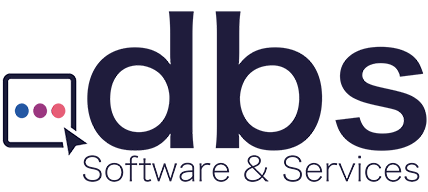
If there was already a digital transition in progress, the pandemic of 2020 propelled a dramatic wave of technology adoption by higher education institutions which will last through 2021 and beyond. Afterall, the world can’t afford a backlog of competent young minds made to wait extra years in an ever-lengthening graduation queue.
Campus shutdowns may have triggered a paradigm shift. Yet, the inevitability of having to go digital should have been apparent to the intelligent layman a while ago.
SO, WHAT IS A DIGITAL CAMPUS?
‘Going Digital’. Sounds like a vague new age catchphrase, doesn’t it? But what does it mean?
specifically, when applied to the education industry? What constitutes the digital transformation and when does it start/end? Like life itself, there are lots of questions with not many clear answers.
Broadly, a digital campus may be defined as: An educational Institution that adopts modern technologies to deliver exceedingly better learning experiences and personalized student support across all touchpoints throughout the student’s journey. From recruiting, to admissions, financial aid, initiation, student services, on through advancement. A digital campus leverages technology to cement the basic pillars of its student’s experience, fomenting access to information, inclusivity, flexibility, collaboration, security, and trust.
Pre-2020, a digital transition typically involved taking care of the basics like the campus digital services, student information systems, and collaboration, usually done piecemeal, and not very quickly. However, 2020 thrust institutions into a mad rush to enhance and/or implement its technology stacks to include broader use of digital tools including video streaming, biometric identification, and online learning platforms. This inevitably put more stress on the institution’s support systems and introduced new requirements for making information flow in a more seamless fashion throughout the institution.
Turns out this is easier said than done, especially if the entire digital ecosystem of the campus wasn’t already set up to provide one seamless experience. There must be an app for that, right?
ACTUALLY, THE NEW NORMAL WAS JUST ROUND THE CORNER.
If you thought pandemic-proofing education was enough of a driving factor, consider the following.
Student demands were already evolving quickly.
In the education world, the student is the consumer. And the consumer profile is rapidly changing. Today’s students are digital natives. They arrive on campus with an expectation that the services they avail are seamless, efficient and accessible on a mobile screen quickly and at any time. Today’s student takes ease of communication and interactivity of user experience for granted. A whopping 87% of the students in a survey from 2017 stated that a university’s technology competency was an important factor for them when deciding on a school.
And e-Learning outcomes are surprisingly good.
While the forced transition away from in-campus classroom learning might, at first glance, seem like a quality challenge. Counterintuitively, the outcomes of e-learning have been found to have improved significantly. E-Learning increases retention rates by 25-60% while retention rates for face-to-face training remains at about 8-10%. Furthermore, e-learning participants learn nearly 5 times more material without increasing time spent in training.
Given that in-campus attendance was out of question, delivering course material and lectures to students remotely became the need of the hour. The university was forced to realize itself as a network of information pathways untethered to real-estate. However, even without the exigencies of the pandemic, there’s enough to indicate that the digital transformation of education is not a compromise in quality. Far from it. In fact, it can tremendously augment service delivery while achieving improved learning outcomes.
THE FOUNDATIONS OF A DIGITAL CAMPUS
A digital campus brings together a number of tools for teachers and educators that build a compelling learning experience. The foundation of which is traditionally a Student Information System which serves as the system of record for the institution.
While often these systems offer basic document management capabilities, under normal circumstances there eventually comes a time when institutions wish to have more information available and more control over that information than student information systems can handle. For many schools, the pandemic accelerated this inevitability.
BEYOND STUDENT INFORMATION SYSTEMS, THE VALUE OF HAVING A DOCUMENT MANAGEMENT SYSTEM.
The pressures placed on digital infrastructure in 2020 was anything but normal. Many institutions now find themselves with requirements that exceed those provided by their student information systems. That’s where document management systems come in. An unsung hero, clearly, the right document management system enhances the capabilities of the student information system in a way that is seamless yet allows institutions to deliver higher levels of digital services to their stakeholders.
Take for instance the work involved in implementing a workflow that requires custom forms. The steps may include data capture, validation, approvals and document routing across departments. This is something that any institution could have to do dozens of times per year, and usually would require several weeks of work to roll out. However, with the right document management system, this whole workflow can be quickly modeled and deployed with low-code automation and without requiring heavy IT deployment in a matter of hours.
A few of the other areas where a document management system can help in education are listed below.
- Securely archive all existing student and faculty records in a centralized location digitally accessible by authorized persons remotely and internally.
- Serve all historical student records to other systems such as CRM/SIS seamlessly via APIs.
- Automate data entry and ingestion of new documents/records into the student and faculty files.
- Automate document routing, multi-approval flows, and auto filing.
- Quickly deploy dynamic forms capable of scanning and collecting data/content from any mobile device
DO MORE WITH LESS.
A good document management system truly enhances the functionality of student information systems by promoting accessibility of documents, enabling real-time collaboration and interactivity, and improving overall administrative efficiency. This is a must for any institution to be able to deliver the levels of services expected by its stakeholders.
Additionally, the gains in productivity and reduced costs resulting from the access and flow of information help control overall expenditures. With ever shrinking budget outlays and limited staff, an efficiently run digital campus with the right technology stack will outcompete those that haven’t yet embraced the new normal. Undoubtedly, the digital campus is here to stay and thrive.

dbs Software & Services (dbs) is a long-standing provider of document management and process automation solutions for education and business, and the exclusive provider of Tessi Docubase® in North America.
Tessi Docubase® is an enterprise-grade modular, secure, and easy-to-use document management system that seamlessly integrates with Business Information Systems. Its secure architecture and a broad range of features make it the perfect solution for a wide range of enterprises and use cases.
dbs LiveForms, is a low-code Business Process Automation platform. Its sole focus is simplifying complex processes by automating repetitive steps – from data capture to alerts, notifications, email confirmations, and everything in between quickly, without involving a programmer.
dbs eSign is a cloud-based electronic signature solution that allows users to manage the signing process for a document, from upload to signing and sealing, from any mobile device or computer.

Leave A Comment